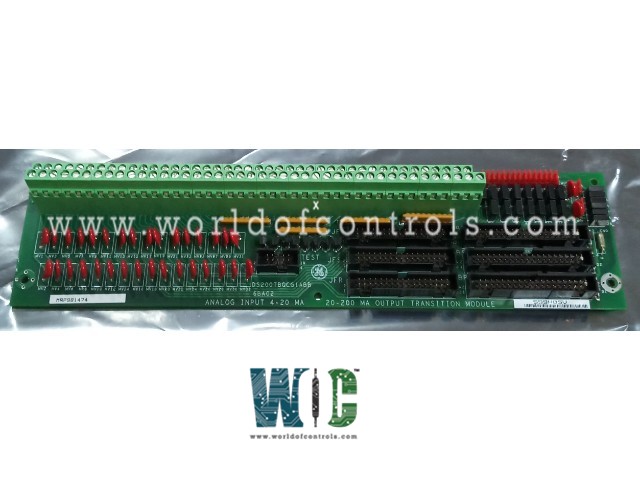
World Of Controls understands the criticality of your requirement and works towards reducing the lead time as much as possible.
DS200TBQCG1ABB - Analog Input Milliamp I/O Termination Module is available in stock which ships the same day.
DS200TBQCG1ABB - Analog Input Milliamp I/O Termination Module comes in UNUSED as well as REBUILT condition.
To avail our best deals for DS200TBQCG1ABB - Analog Input Milliamp I/O Termination Module, contact us and we will get back to you within 24 hours.
SPECIFICATIONS:
Part Number: DS200TBQCG1ABB
Manufacturer: General Electric
Series: Mark V LM
Product Type: Analog Input Milliamp I/O Termination Module
Number of channels: 12
Common Mode Voltage Range: +5 V dc
Maximum Lead Resistance: 15Ω
Analog output current: 0-20 mA
Operating temperature: -30 to 55 °C
Size: 8.26 cm high x 4.18 cm
Frequency: 50 or 60 Hz
Repair: 3-7 Day
Availability: In Stock
Weight: 2 lbs
Country of Origin: United States
Manual: GEI-100222
FUNCTIONAL DESCRIPTION:
DS200TBQCG1ABB is an Analog Input Milliamp I/O Termination Module manufactured and designed by General Electric as part of the Mark V Series used in GE Speedtronic Gas turbine Control Systems. The Analog Input Termination Module (TBQC) is in location nine on the
FEATURES:
WOC has the largest stock of GE Speedtronic Control System Replacement Parts. We can also repair your faulty boards and supply unused and rebuilt boards backed up with a warranty. Our team of experts is available round the clock to support your OEM needs. Our team of experts at WOC is happy to assist you with any of your automation requirements. For pricing and availability on any parts and repairs, kindly get in touch with our team by phone or email.
What is an Analog Input Milliamp I/O Termination Module?
An Analog Input Milliamp I/O Termination Module is a device that converts analog current signals (usually in the 4-20 mA range) into digital signals that can be processed by control systems like PLCs or DCS. It also provides termination for the wiring and ensures proper signal transmission.
Why is signal conversion necessary in this module?
Signal conversion is essential because control systems typically process digital signals, whereas many industrial sensors output analog signals. The module converts these analog current signals into a digital format, allowing them to be easily interpreted by the control system.
What does signal termination mean in this context?
Signal termination refers to the proper connection of the analog signal wiring to the module. It ensures the signal is received correctly, transmitted without loss, and properly communicated to the control system.